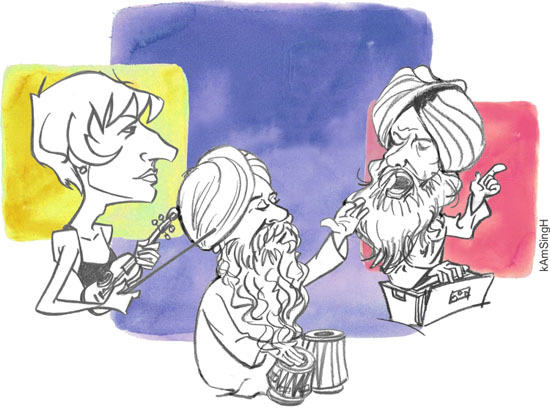

Soundscapes by Sara Michieletto, Bhai Baldeep Singh and Madan Gopal Singh
6.15
pm, Monday, February 8, 2010
The Tagore Theatre, Sector 18-A, Chandigarh

Water flows as time flies,
memory is retained
until the waters evaporate.
Vapour carries the indelible
the stains
of a tear that once flowed
a smile once adorned
a thought realized.
Shattered innumerous times
a soil soiled by the greedy.
Yet, affords a response with
a melancholy note
a gay like beat
and
even a revelation,
a phulkari.
Bhai Baldeep Singh
Madan Gopal Singh
Sara Michieletto